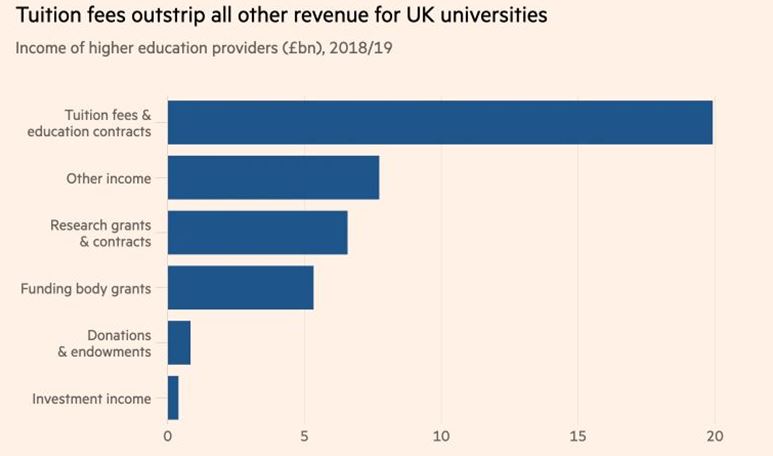As India mulls over the decision to bring back Indian students stranded in the United Kingdom, the universities have tried to extend support to students given their fear of losing income. The universities in the UK earn almost one-third of their total income from international students, and therefore, they are worried that students leaving the country would render them bankrupt.
“We are aware that many Indian students are concerned about money and accommodation, they are missing their families, and are understandably distressed to be far from home during this global pandemic. My message to those students is: please, please speak to your university,” said Vivienne Stern, Director of Universities UK international.
The Coronavirus pandemic has taught a lesson to the British establishment, which a few years ago, was planning to throw out Indian students under the leadership of Theresa May. In November 2017, the then British Prime Minister Theresa May had said, “the UK would consider further improvements to its visa offer if, at the same time, we can step up the speed and volume of returns of Indians with no right to remain in the UK.”
This also shows the dependence of Universities in English-speaking nations when it comes to earnings from students, be it those from China or India. In the last decade, the universities in English speaking countries- the United States, United Kingdom, Canada, and Australia- built a business model in higher education. Fuelled by globalization and rise of income in the so-called third world countries like China and India, these universities attracted lakhs of international Students who paid tuition fees two to three times more than domestic students.
Over the years, these universities became dependent on tuition fees paid by international students for income, and the economy of university towns boomed.
The growth in the number of international students coming every year has been in double digits in the last many years with United States being the largest host country of international students followed by the UK, China, Canada, and Australia.

Addicted to income through foreign students, universities in the English speaking countries- where governments privatized and liberalized higher education to attract international students in large numbers- developed it into a full-fledged business model.
They borrowed money from the market to invest in university infrastructure, anticipating double-digit growth in the number of students and income in the next few years. This business model became highly successful and contributed to a good percentage of total GDP in countries like Canada and the United Kingdom. But, like the other sectors of the economy, these universities never hedged their business model in case of a pandemic like the one we’re battling today.

With the Coronavirus induced lockdown, the double-digit growth registered in the number of international students is poised to dive into negative territory, as the majority of the students from China, which faced the pandemic early this year, have dropped from courses. In India, from where most of the students take admission in foreign universities in the fall season (June-July), the prolonged lockdown and slowdown of the economy has made things worse.

As per Universities UK, the body that represents British higher education, the income from tuition fees is projected to drop by one-third or 7 billion pounds. Given the fact that tuition fees constitute one-fourth of the total income of the universities, they are poised to run out of money to even keep functioning.
Similarly, Universities Australia expects a drop of 14 percent or 4.6 billion Australian dollars in tuition fees. “This will put at risk 21,000 jobs in the next six months, and more after that,” says Catriona Jackson, its chief executive. “Individual universities are already cutting costs across the board with very substantial reductions in operational spending, deferral of vital capital works, and reductions in senior staff salaries. However, this will be nowhere near enough.”
The expansion of the higher education economy employed many people in these sectors, but with the fall of income due to the reduced number of international students which is a major source of income for these universities, many people employed in the sector would end up jobless.
The business model of higher education economy funded by foreign students is under strain. “Some universities took on way too much risk in terms of exposing themselves to the Chinese market,” says Martin Parkinson, chancellor of Macquarie University and formerly Australia’s top civil servant. “You might find that the growth in foreign students slows markedly because no one actually wants to leave home. At the end of this process universities are going to have to go through a shake-up of their business models.”
In the United States, “Public universities are at greater risk of lower funding from the government than their international peers, with state funding accounting for approximately 25 percent of revenues,” said Moody. “Pressures may lead to cuts in university funding as states direct resources towards more essential services, such as healthcare.” Most of the private universities have enough deposits to sail through these tough times but public universities are in real trouble, for their income from international students as well as government support is going to decline as the government diverts funds to more essential services.

































